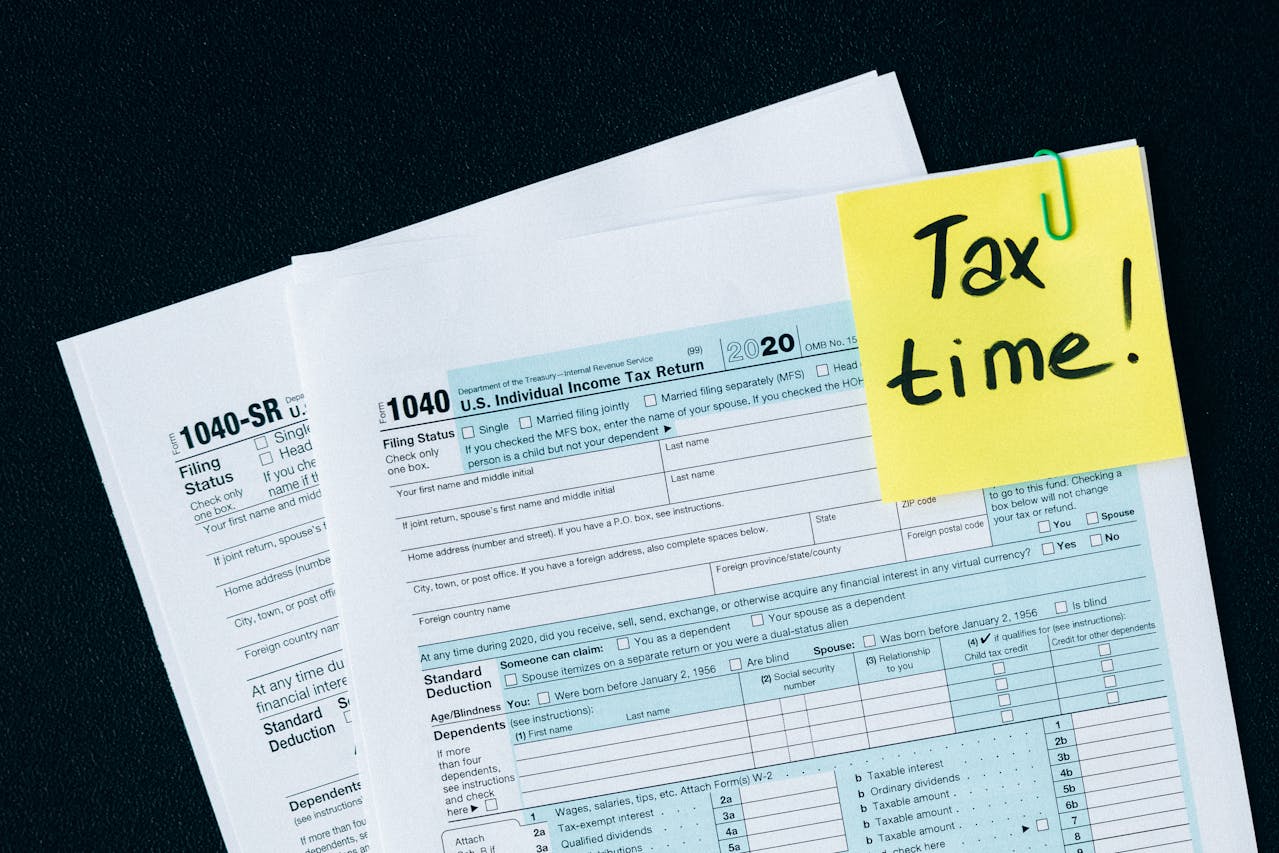This guide simplifies the complex process of filing federal business taxes for various entity types. Discover essential steps, specific tax forms for your structure, and efficient filing options to ensure compliance.
Filing federal income taxes for your business can feel like a monumental task, regardless of whether it's your first time or you're a seasoned entrepreneur.
This guide breaks down the process into manageable steps. Following these will help ensure you meet your obligations smoothly and efficiently. The key is a systematic approach to what can otherwise be a chaotic experience.
From gathering your documents to submitting your return, having a clear roadmap is critical. Let's walk through the essential information you need to file your federal business taxes correctly.
Step 1: Compile and organize your documentation
Proper tax preparation always starts with diligent recordkeeping. Before you begin filling out any forms, the first step is to gather all the business records pertinent to the tax year. The specific documents you need will vary based on your business structure, but some pieces of information are universally required.
You should start by collecting the following essential details:
- Your personal information, including your Social Security Number (SSN) and date of birth.
- Your business's Employer Identification Number (EIN), which can be found on the IRS website if you've misplaced it.
- Copies of your previous year's tax returns, as they can provide a useful reference.
Next, you'll need to assemble all documentation related to your company's financial activity. For earnings, this includes invoices sent to customers, records of goods sold, and any other sales records that document incoming cash flow. For expenses, gather all receipts for costs your business incurred. These might include rent for your commercial space, office supplies, employee wages, business-related meal expenses, and mileage logs for travel.
Keeping track of paper receipts and digital invoices can be overwhelming. Manually sifting through piles of crumpled papers or searching endlessly through an inbox is an inefficient way to manage your financial records. To streamline this, you can use a service like Zenceipt, which connects to your email inbox to automatically find and organize accounting documents like invoices and receipts, ensuring they are always accessible and ready for tax time.
With your records in order, it's time to identify the specific tax forms you need to complete. The required forms are determined by your business's legal structure.
Sole proprietorships and single-member LLCs
If you operate an unincorporated business by yourself, work as an independent contractor, or are the sole member of a Limited Liability Company (LLC), you will file your taxes as a sole proprietor. This means you report your business's income and expenses on a form attached to your personal tax return.
The specific form is Schedule C, Profit or Loss from Business. The IRS provides detailed line-by-line instructions to guide you. After listing your income and deducting your expenses, the resulting net profit or loss is reported on your personal tax return. Remember that as a self-employed individual, you are also responsible for paying self-employment tax, which covers Social Security and Medicare taxes.
Partnerships and multi-member LLCs
For businesses with multiple owners, such as partnerships or multi-member LLCs that opt for partnership tax treatment, the process is different. These entities must file Form 1065, U.S. Return of Partnership Income. This is an information return that reports the business's financial performance to the IRS.
The partnership itself does not pay income tax. Instead, profits and losses are "passed through" to the individual partners. Each partner receives a Schedule K-1, which details their share of the profit or loss. This information is then reported on each partner's personal tax return, and they pay taxes accordingly.
C corporations
If your business is structured as a C corporation or an LLC that has elected to be taxed as one, you must file a separate business income tax return using Form 1120, U.S. Corporation Income Tax Return. This is filed independently of your personal taxes.
Under the Tax Cuts and Jobs Act, the corporate income tax is a flat 21%. However, C corporations are subject to double taxation, meaning the corporation pays tax at the corporate level, and then shareholders pay tax again on any dividends they receive. Form 1120 is also used to claim business tax deductions.
S corporations
S corporations, which can be C corps or LLCs that have made the S corp election, also file a separate corporate tax return but use Form 1120-S, U.S. Income Tax Return for an S Corporation. Similar to partnerships, S corps are pass-through entities.
The corporation files Form 1120-S to report its income and deductions, and each shareholder receives a Schedule K-1 detailing their share of the profit or loss. This income is then reported on their personal tax returns. The IRS offers instructions for Form 1120-S to help with completion.
Businesses that hire contractors
If your business paid any contractor or professional $600 or more during the tax year, you must file Form 1099-NEC, Nonemployee Compensation. You are required to send a copy to the contractor and file another with the IRS. These forms must be requested from the IRS ahead of the January 31 deadline for sending them to recipients.
Step 3: File your return electronically
The vast majority of taxpayers—around 92%—file their taxes electronically. Online filing, or e-filing, is generally faster and more secure than mailing paper forms, and it allows you to receive any potential refund via direct deposit. The IRS provides two primary options for e-filing directly.
Your choice between these options depends on your adjusted gross income (AGI). If your AGI is below $73,000, you are eligible to use IRS Free File. If it is above that threshold, you must use Free File Fillable Forms.
Using IRS free file
The IRS Free File Program is a partnership between the IRS and several tax software companies. You use a provider's software to prepare and file your federal tax return at no cost. The software guides you through the process, handles calculations, and submits the return for you.
However, the free versions offered by these commercial providers may not include the necessary forms for business tax filing, such as Schedule C or corporate returns. These typically require upgrading to a paid tier. For a comparison of different providers, you can find breakdowns from publications like Fit Small Business.
Free File Fillable Forms are electronic versions of paper IRS forms. This option does not provide the step-by-step guidance of tax software and performs only basic calculations. You are responsible for entering all the information correctly and selecting the right forms.
This method is best suited for those who are already experienced with filing business taxes manually and are comfortable navigating the forms without assistance. It only supports filing for the current tax year and does not cover state taxes.
Step 4: Manage deadlines and make payments
Meeting tax deadlines is crucial to avoid penalties. Most businesses are required to pay taxes throughout the year in four installments, known as estimated tax payments. These payments cover your income tax and self-employment tax liability.
You can pay your estimated taxes online or by phone through the official IRS Payments Gateway. For corporations, these payments must be made through the Electronic Federal Tax Payment System (EFTPS).
If you anticipate missing the annual filing deadline, you can apply for an extension. An extension gives you more time to file your return, but it does not extend the deadline for paying the taxes you owe. You must still estimate your tax liability and pay it by the original due date to avoid penalties.
Finally, remember that federal taxes are only part of the picture. You must also stay on top of your state and local tax obligations, which may include property taxes, sales taxes, and more. Consulting with a tax professional can help ensure you remain compliant with all tax requirements.






